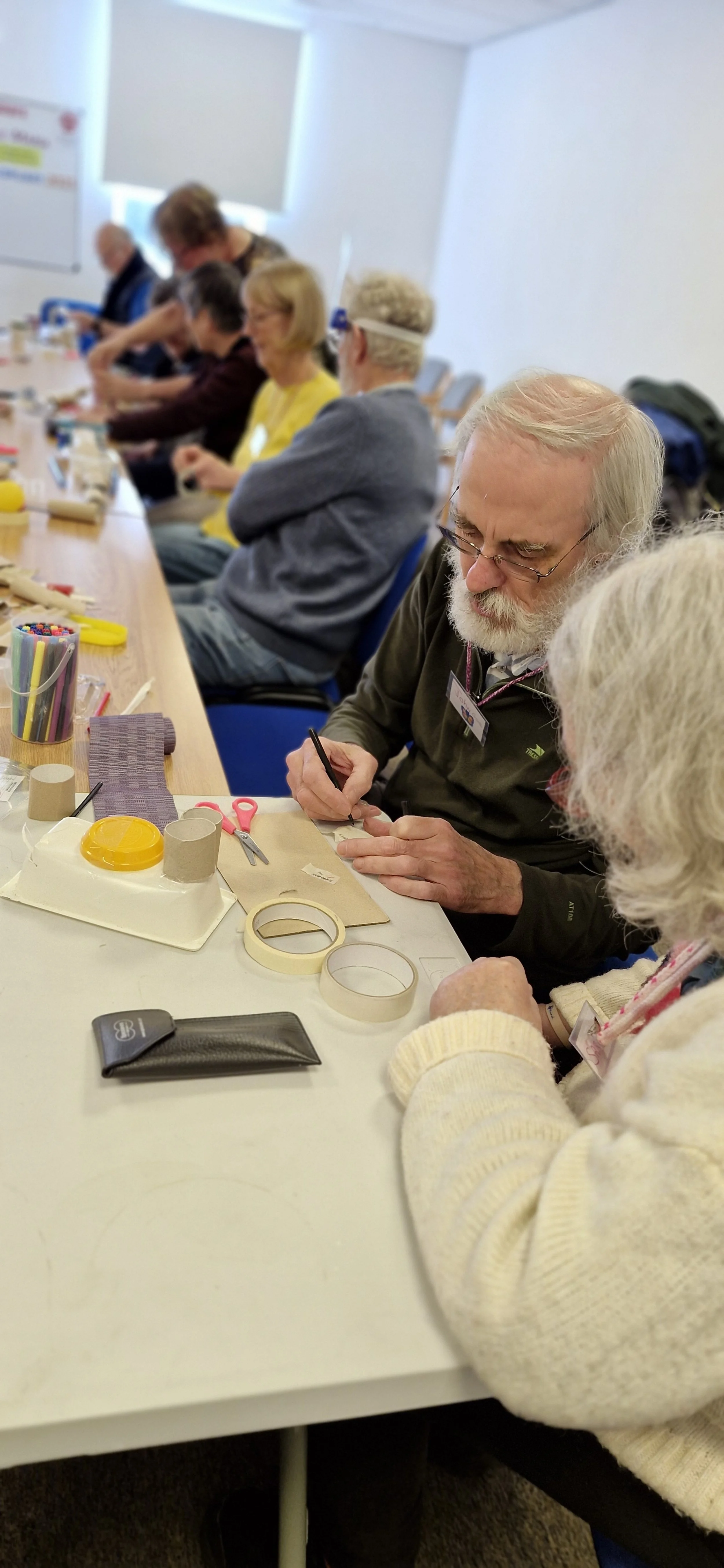
Plastic pots, train stops, and coastal spots: community junk modelling
In partnership with Clean Our Patch CIC, with funding from Great Western Railway (GWR)
Working with communities for intergenerational collaboration, sustainable thinking, and creative confidence building.
“Thank you again for hosting yesterday’s workshop in Woolwell; we always enjoy challenging ourselves with new materials and being encouraged to think about how public transport and looking after the environment is individual as well as a wider responsibility. Everyone’s trains looked so great together”
“I was really apprehensive at first, art is not my thing. But I surprised myself and really got into it - I hadn’t laughed all week. It made my week to laugh so much.”
As part of an inspiring city-wide initiative in partnership with Clean Our Patch, we delivered a series of 10 community junk modelling workshops, and 10 schools-based workshops that engaged people of all ages to create a train collage from discarded materials to add to the collaborative, marine-themed sculpture.
Over the year-long project, we worked right across Plymouth, ranging from the city centre, to Stonehouse and reaching as wide as Woolwell. This engaged a wonderfully diverse range of community groups – from young Scouts and primary school children to Memory Cafés for people living with dementia, to the Veterans’ Model Club. Each group brought their own stories, skills, and creativity to the table, using litter-picked materials to build imaginative train carriages that reflected their personal and collective journeys.
These unique carriages were then linked together to form the giant jellyfish – a joyful, thought-provoking sculpture exploring ideas of sustainable transport, environment, and community connection. Inspired by the Plymouth Sound, the Great Western Railway and the power of community action, the final artwork celebrated both our industrial heritage and our shared responsibility for the planet.
The workshops not only sparked conversations about waste, reuse, and the health of our oceans – they also fostered creativity, confidence, and intergenerational connection. By transforming trash into treasure, participants experienced the power of collective imagination and the value of caring for both people and place.
This project demonstrated how creativity and environmental activism can go hand in hand – and how, when we build together, we move toward a more connected, hopeful future.









